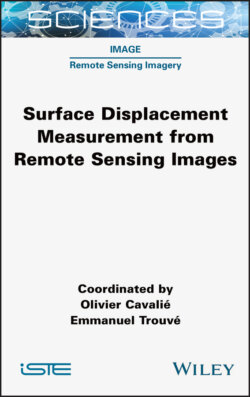Читать книгу Surface Displacement Measurement from Remote Sensing Images - Olivier Cavalie - Страница 17
1.2.1. ERS-1, ERS-2 and Envisat
ОглавлениеERS-1 (1991–2000) and ERS-2 (1995–2011), the European remote sensing satellites, began the era of SAR instruments in Europe and demonstrated the first applications in radar interferometry. The five-year overlap provided the opportunity to develop very nice orbital combinations, such as the so-called tandem phase, allowing acquisitions of the same area within just a one-day interval, which was much more favorable than the native 35-day repeat cycle for InSAR on rapidly changing surfaces.
The Environmental Satellite (Envisat) continued the C-band SAR missions for Europe with the ASAR instrument, as well as numerous added payloads, among which were the DORIS instrument for precise orbit determination and the MERIS spectrometer, giving simultaneous information on the composition of the atmosphere and overlapping most of the SAR swath. Envisat was put on the same 35-day orbit as the ERS series from April 2002 until October 2010, when a drifting orbit had to be set due to the lack of propellant until its end in May 2012.
ERS-2 had an overlap in the years 2007–2008 with Envisat, with a 30 min delay between the two satellites, but the central frequency was shifted from 5.3 GHz (ERS) to 5.33 GHz (Envisat) so that cross-intereferometry was restricted to common bandwidth in limited cases.
The geometry of ERS satellites was quite simple with a 23° fixed incidence angle, swath of about 100 km and one single polarization set to VV. The Envisat ASAR instrument was more complex, with modes divided in ScanSAR and its large swath of 405 km (composed of five sub-swaths), as well as seven stripmap modes (IS1 to IS7). A wave mode was operated over the ocean. Customers could order any kind of mode, so the archive was not homogeneous over the Earth and strongly depended on the area considered: it therefore became more difficult to get two images acquired in the same mode, suitable for interferometry. However, for some closely monitored volcanic islands, it was quite interesting to get different passes in the 35-day cycle with different incidence angles.
Note also that ASAR was not full polarimetric, but authorized different kinds of scheme, such as the alternating polarization (AP) mode, which could emit alternatively in H and V polarizations and receive H and V.
Some limitations of the missions with regard to interferometry: As these missions were decided before differential interferometry emerged, some limitations had to be tackled (Solaas and Coulson 1994). For ERS-1/2, orbital housekeeping looseness led to perpendicular baselines B⊥ (see section 4.2.2 in Chapter 4) higher than the limit of 1,100 m. A preferred value of 600 m was set for B⊥ (see definition in section 4.2), so that a tool to determine which orbits or track frames were compatible for interferometry had to be developed. In addition, the orbit was not known as precisely as the latest SAR missions: orbital fringes had to be removed before interpretation. PRARE, a dedicated instrument for precise orbit determination, failed after several weeks on ERS-1 but lasted several years on ERS-2 and was able to deliver precise ranging accuracy of less than 7 cm.
In contrast to future missions (e.g. ALOS-2 or Sentinel-1), Envisat ScanSAR bursts were not synchronized on board, meaning the Doppler overlaps had random values from one pass to another and were not always compatible. Some results were however published in ScanSAR mode; for instance, for the 2003 Bam earthquake in Iran.
In late October 2010, Envisat got a new orbit cycle of 30 days in a degraded configuration. At this point, interferometry could only work around latitudes of 38° (north and south). As a result, tracks could not be combined with the previous 35-day orbit cycle. However, along-track interferometry in the new geometry could produce interesting results, for example interferograms for the Sendai (Tohoku) earthquake that occurred on March 11, 2011, which led to the Fukushima disaster.
Data access: During the missions, European Space Agency (ESA) products were not free of charge and RAW data were much cheaper. Furthermore, some technical teams preferred to do the radar synthesis themselves to ensure a better signal shape in the range spectrum. Nowadays, as indicated by the ESA (2019), the (A)SAR on-the-fly (OTF) data processing and dissemination service allows end-users to gain direct access to ESA’s complete high-resolution (A)SAR archive from the ERS-1, ERS-2 and Envisat missions. The service provides (A)SAR Level 1 high-resolution data, which are processed from Level 0 on user request by the system. Users can register themselves and immediately download Level 1 (A)SAR data products. The service is available via the ESA Online Dissemination Service at https://esar-ds.eo.esa.int/oads/access.
